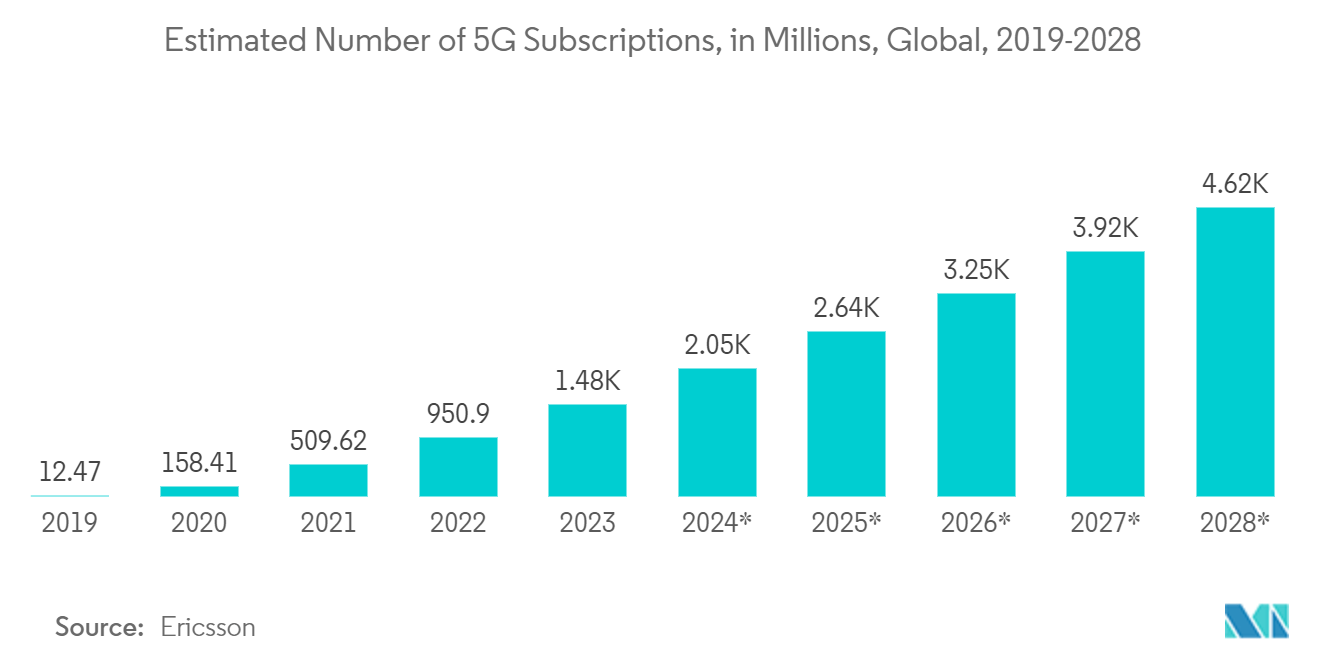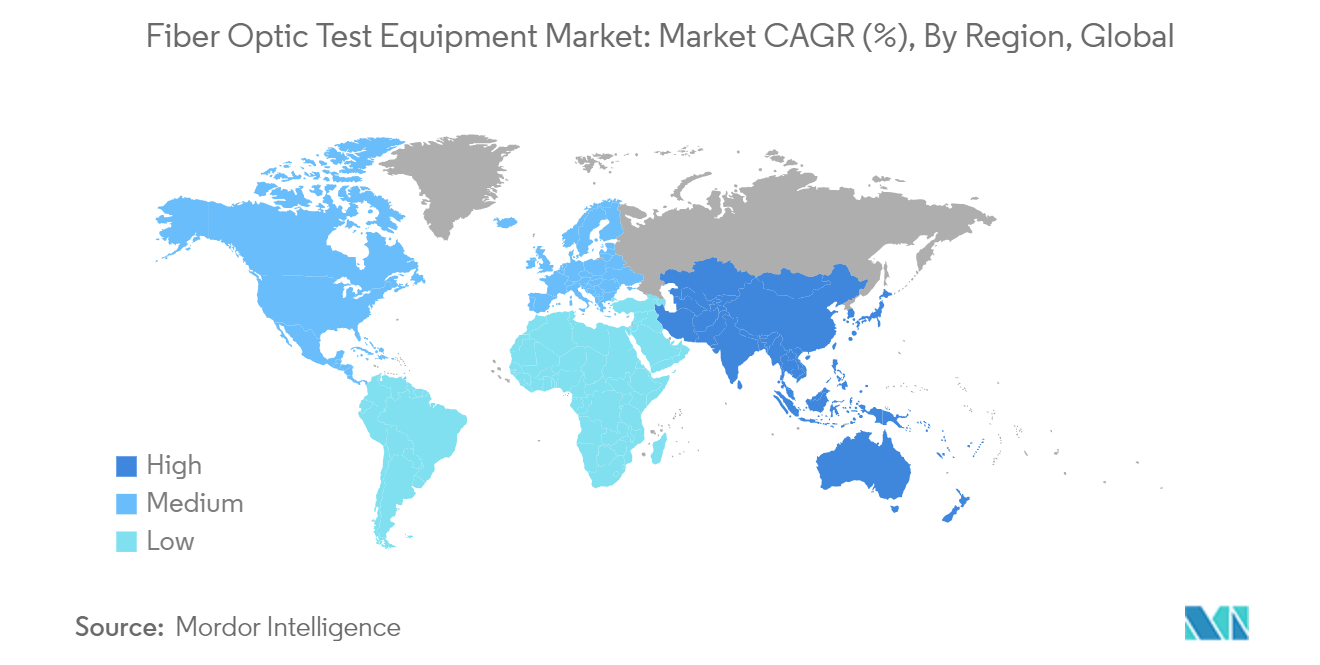Market Trends of Fiber Optic Test Equipment Industry
Telecommunications to Witness Significant Growth
- Fiber optic connections have transformed the telecommunications sector. It has also established a strong presence in the data networking field. Optical communications through fiber optic cable have enabled telecommunications lines to be established over considerably greater distances. With the significantly lower transmission and medium loss levels, fiber optical communications have enabled far higher data speeds to be accommodated. As a result of these advantages, Fiber optic communications systems are widely used for applications ranging from significant telecommunications infrastructure to Ethernet systems, broadband distribution, and general data networking.
- Growing demand for connectivity and internet access among the rising metropolitan cities positively drives the market's growth. The growing need for higher internet speed and better connectivity eventually requires strong and efficient fiber optic test equipment, which optical technology fulfills, thereby positively driving the market's growth.
- The market for fiber optic test equipment is also driven by the emergency of 5G connectivity and the rapid expansion of fiber optic networks. For instance, According to Ericsson, rapid growth is expected over the coming years, with the number of 5G subscriptions forecast to reach almost 4.7 billion by 2028
- Additionally, fiber-to-the-home deployments are becoming more common as providers seek to deliver high-speed internet directly to homes and businesses. Fiber test equipment is essential for ensuring the quality and reliability of these last-mile connections.

Asia Pacific to Register Major Growth
- China is anticipated to remain among the major markets for fiber optic test equipment in the Asia Pacific region, owing to the presence of a large ecosystem for optical fiber cables. For instance, the country has a diversified base of fiber optical cable manufacturers. Furthermore, the government is also witnessing a notable growth in digital infrastructure investment, creating opportunities in the market studied as optical fiber cables form the core of digital infrastructure.
- China's technological outreach also incorporates its international infrastructure mega-project, the Belt and Road Initiative (BRI), which aims to reorient the global economy toward Beijing through infrastructure deals with over 60 countries. BRI's most consequential component is expected to be the Digital Silk Road (DSR). China builds the Digital Silk Road from Pakistan to Africa and Europe. Directed by companies like Huawei, the DSR seeks to connect the global economy through evolving technologies transforming global networks, such as fiber-optic cables and 5G-supported communications.
- Japan holds significant growth potential for the fiber optic test equipment market as the country houses an established ecosystem for fiber optic networks. Furthermore, the growing demand for increased network bandwidth is also driving the Japanese optical fiber cable market with the proliferation of digital technologies that shift the bandwidth requirements. For instance, according to the recent government policy promoting digitization, the government aims to expand the high-speed fiber-optic networks to about 99.9% of households by 2028.
- Furthermore, the government aims to expand the coverage of next-generation 5G wireless networks to 99% of the population by 2030 and complete seabed cables surrounding Japan by the end of fiscal year 2025. Hence, such trends will drive ample opportunities in the market studied during the forecast period.


